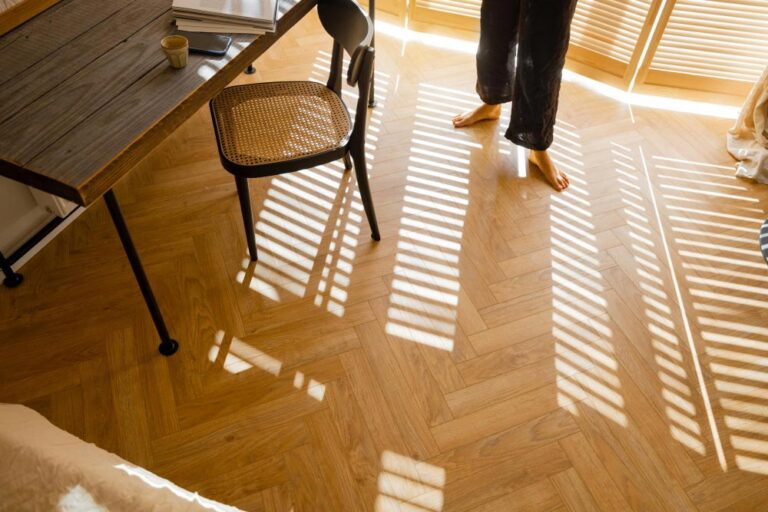Solving Flooring Issues: What to Do When Your Floors Crack
Flooring issues can be a homeowner’s worst nightmare – from cracks and chips to discoloration, there’s a lot of potential for costly repairs. When it comes to cracks, however, there are ways to identify and fix them before they become a major issue. Knowing what to do when your floors crack can help you save time and money, as well as restore the aesthetic of your home. In this guide, we’ll take a look at the causes of floor cracks, the signs to look out for, and the steps you can take to repair them. Whether you’re dealing with a minor crack or a major problem, this guide will provide you with the knowledge you need to get your flooring looking its best again.
What Causes Floor Cracks?
The most common causes of floor cracks are humidity changes, wear and tear, and poor installation. Humidity is a major factor in causing flooring to crack. When the air becomes too dry or too humid, it causes the wood to expand and contract, leading to stress on the flooring and eventually resulting in cracks. Wear and tear is also a common cause, as walking on a floor over a long period will cause it to become weak and eventually lead to cracking. Finally, poor installation can also be a factor, if the flooring isn’t installed properly, it won’t be able to handle the weight placed on it and will eventually crack. It’s important to note that some types of flooring are more prone to cracking than others. Also older floors may be more likely to crack due to their age and the wear and tear they have experienced over time.
Signs to Look Out For
There are several signs to look out for when it comes to floor cracks. The most obvious is the appearance of the crack itself, which can range from a small line to a large gap in the flooring. Additionally, you may notice that the floor has become weak or unstable in certain areas, or that it’s no longer level. This is a sign that the floor has become stressed and is likely to crack.
If you notice any of these signs, it’s important to take action quickly. Delaying repairs can cause the crack to become worse and lead to more costly repairs. It’s also important to pay attention to any other signs of flooring damage, such as discoloration, warping, or chips. These are all signs that your floor may need repair.
How to Identify Different Types of Floor Cracks
The type of floor crack will determine the best course of action for repair. There are two main types of floor cracks – hairline cracks and wide cracks. Hairline cracks are small, thin cracks that are usually caused by humidity changes or wear and tear. These are usually only a few millimeters in width and can usually be repaired with a simple DIY fix.
Wide cracks, on the other hand, are usually caused by more serious issues, such as poor installation or serious wear and tear. These cracks are usually much wider and can be up to a few inches in width. It’s important to identify these cracks quickly, as they can cause serious damage to the floor if left untreated.

DIY Fixes for Minor Floor Cracks
If you’ve identified a minor floor crack, such as a hairline crack, you may be able to fix it yourself with a few simple steps. First, you’ll need to clean the area around the crack with a vacuum, a damp cloth, and a mild cleaner. Once the area has been cleaned, you’ll need to fill the crack with wood filler. You can find wood filler at most home improvement stores, and it’s important to make sure you choose a filler that matches the color of your flooring.
Once the filler has been applied, you’ll need to let it dry for 24 hours. After the filler has dried, you can use sandpaper to smooth out any rough surfaces. If you’re dealing with a hairline crack, this may be enough to repair the crack and restore the aesthetic of your flooring.
How to Repair Major Floor Cracks
If you’ve identified a major floor crack, it’s important to take action quickly. These types of cracks can cause serious damage to the floor and should be repaired as soon as possible. The first step is to determine the cause of the crack. If the cause is humidity changes, you may be able to repair the crack yourself with a few simple steps.
First, you’ll need to clean the area around the crack with a vacuum, a damp cloth, and a mild cleaner. Then, you’ll need to use a moisture meter to determine the humidity level of the flooring. If the humidity level is too high or too low, you’ll need to adjust the humidity in the room to the appropriate level. Finally, you’ll need to fill the crack with wood filler and let it dry for 24 hours. If the cause of the crack is poor installation or wear and tear, it’s best to contact a professional flooring contractor. They will be able to diagnose the problem and provide you with the best course of action for repair.
Professional Floor Crack Repair Services
If you’re dealing with a major floor crack that requires professional repair, it’s important to choose a reputable contractor. A professional flooring contractor will be able to identify the cause of the crack and provide you with the best repair solution. They will also be able to provide you with an estimate of the cost of repair, as well as any other necessary services such as sanding and refinishing.
Best Practices for Preventing Floor Cracks
Taking preventive measures is the best way to ensure that your floors don’t crack. The first step is to maintain a consistent humidity level in the room. This can be done by using a dehumidifier or a humidifier, depending on the humidity level of the room.
It’s also important to inspect the floor regularly for any signs of damage. If you notice any signs of wear and tear, it’s best to take action quickly. Delaying repairs can lead to more costly repairs, so it’s important to contact a professional flooring contractor as soon as possible. Finally, it’s important to use furniture protectors on your furniture. These protectors will help reduce the wear and tear on your flooring and will help prevent cracking.







